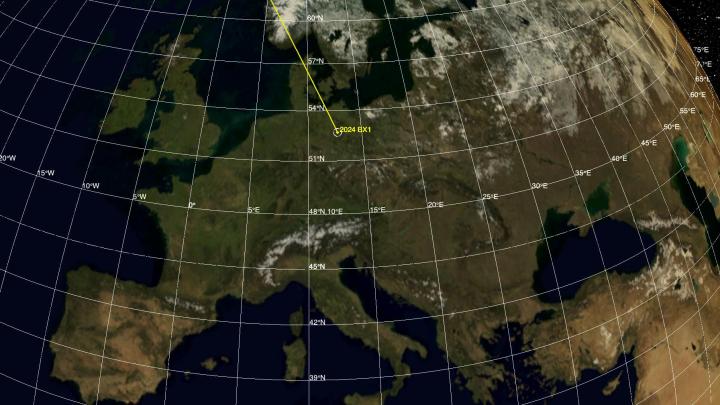Earth is frequently bombarded by small asteroids, which burn up harmlessly in the atmosphere. However, identifying and tracking these asteroids is an important step in protecting the Earth against the threat of larger and potentially more dangerous impacts. NASA recently predicted the impact of a small asteroid that struck Germany using its impact prediction system, Scout.
“A small asteroid about 3 feet (1 meter) in size disintegrated harmlessly over Germany on Sunday, Jan. 21, at 1:32 a.m. local time (CET),” NASA wrote in an update. “At 95 minutes before it impacted Earth’s atmosphere, NASA’s Scout impact hazard assessment system, which monitors data on potential asteroid discoveries, gave advance warning as to where and when the asteroid would impact. This is the eighth time in history that a small Earth-bound asteroid has been detected while still in space, before entering and disintegrating in our atmosphere.”

Spotting incoming asteroids is challenging because of their small size. Asteroids of less than around 25 meters across will burn up in the atmosphere and are very unlikely to do damage but are very difficult to spot. Surveys like the Catalina Sky Survey use ground-based telescopes to identify potential asteroids that could come close to Earth, aiming to spot them before they strike the atmosphere.
In the case of this particular object, it was spotted by a Hungarian astronomer named Krisztián Sárneczky using the Konkoly Observatory near Budapest, who then reported the findings to a group called the Minor Planet Center, which tracks small bodies in the solar system, including asteroids.
Data from the Minor Planet Center on objects that could come close to Earth called near-Earth objects, is then fed into NASA’s Scout system. This automatically scans through huge quantities of data to identify objects likely to impact Earth.
This system identified the incoming object, named 2024 BX1, and predicted its impact location and time, which was refined as more data came in. In this case, the impact was predicted around an hour and a half before it occurred.
If an object were larger and threatening to do damage, the aim would be to get more warning — but these larger objects are much easier to spot. The hope is that if an asteroid were ever to threaten the planet, it could be detected by automated systems in time for an intervention such as that demonstrated in the DART test in 2022.
Editors' Recommendations
- Hubble discovers over 1,000 new asteroids thanks to photobombing
- NASA has collected a whopping 121 grams of sample from asteroid Bennu
- NASA’s first asteroid-sampling mission continues on to a new target
- NASA’s Lucy spacecraft will soon make its first flyby of an asteroid
- NASA’s Psyche mission launches to explore a metal asteroid




